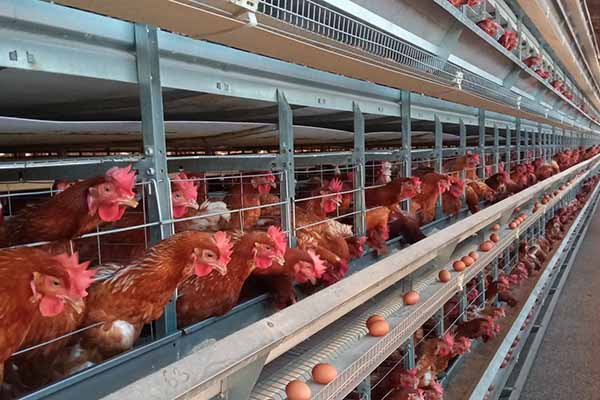Poultry Farm Layout with Battery Cages: An Essential Guide for Success
1. Introduction to Battery Cages in Poultry Farming
Battery cages are a common method of raising chickens in poultry farms. These systems provide a controlled environment for the birds, ensuring optimal health and productivity. A well-designed poultry farm layout with battery cages can significantly enhance the farm’s efficiency and profitability.
2. Key Considerations for Poultry Farm Layout with Battery Cages
When designing a poultry farm layout with battery cages, several factors should be taken into account:
- Space Allocation: Allocate sufficient space for each bird to ensure comfortable and hygienic living conditions. Generally, a space of 0.3 square meters per bird is recommended.
- Feed and Water Systems: Implement an automatic feeding and watering system to ensure birds have access to food and water at all times.
- Airflow and Temperature Control: Proper ventilation and temperature control are crucial for maintaining bird health and productivity. Aim for a minimum of 10 air changes per hour.
- Manure Removal: Regular manure removal is essential to maintain hygiene and reduce the risk of disease. Consider installing a manure handling system to automate this process.
3. Best Practices for Battery Cages in Poultry Farming
Here are some best practices to ensure the success of your poultry farm layout with battery cages:
- Regular Maintenance: Conduct regular maintenance of the cages, including cleaning and repairs, to prevent accidents and ensure the longevity of the equipment.
- Health Monitoring: Implement a health monitoring program to detect diseases early and take appropriate measures to prevent outbreaks.
- Efficiency: Optimize the layout to reduce waste and increase productivity. Consider the size of the birds, the growth stage, and the number of birds per cage.
4. Data-Driven Decision Making
Using data to make informed decisions is crucial for the success of your poultry farm. Collect and analyze data on bird performance, feed consumption, and equipment efficiency. This will help you identify areas for improvement and make data-driven decisions to enhance your farm’s productivity.
5. Conclusion
Creating an efficient and profitable poultry farm layout with battery cages requires careful planning and attention to detail. By considering the factors mentioned above, you can ensure the success of your farm. For more information on poultry farm layout design and equipment, contact us for a free, no-obligation consultation.
For more information, please feel free to leave a comment or contact us directly. We’d be happy to provide you with a free, detailed poultry farm layout design and equipment quote.
<img src="http://www.qualitychickenfarm.com/wp-content/uploads/2025/05/automatic-chicken-cage-5.jpg" al t=”inserted image”>
t=”inserted image”>




